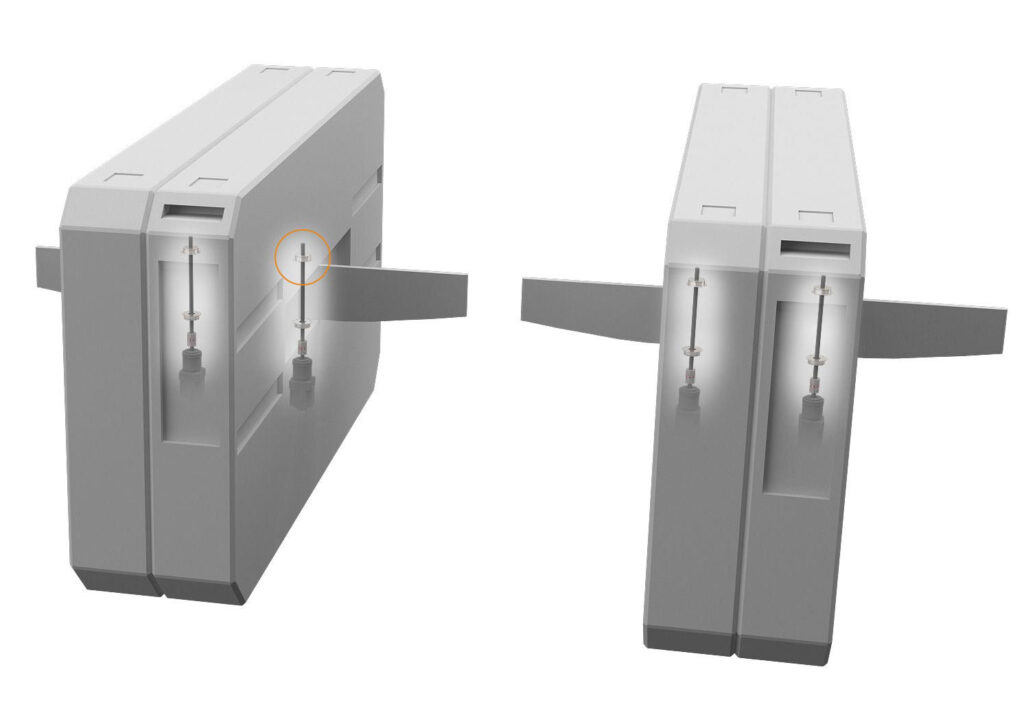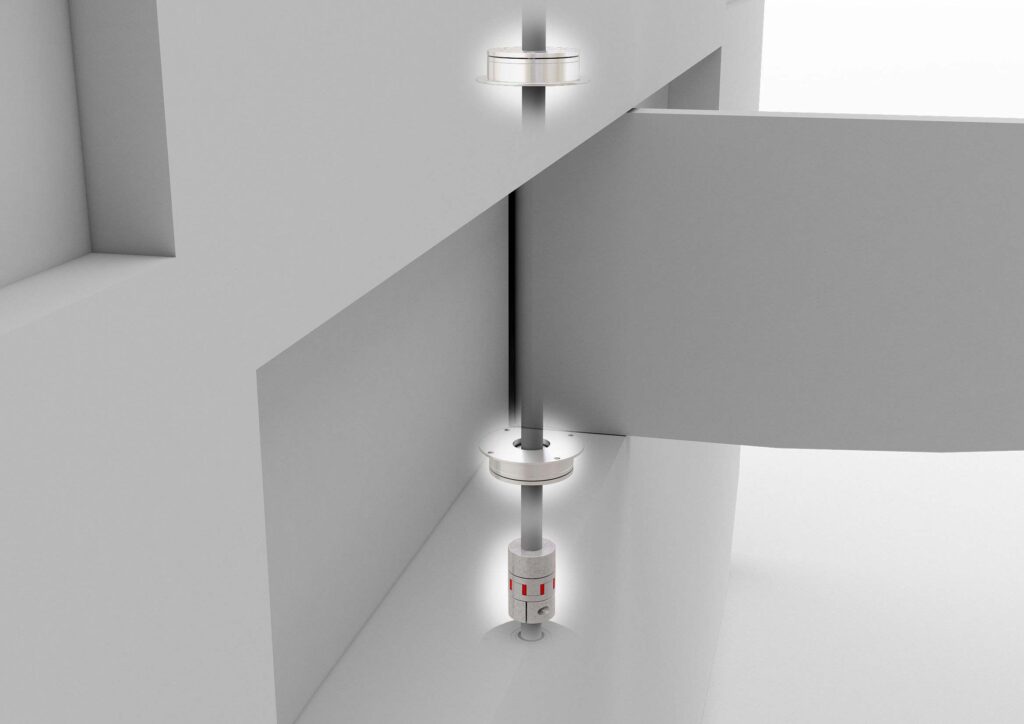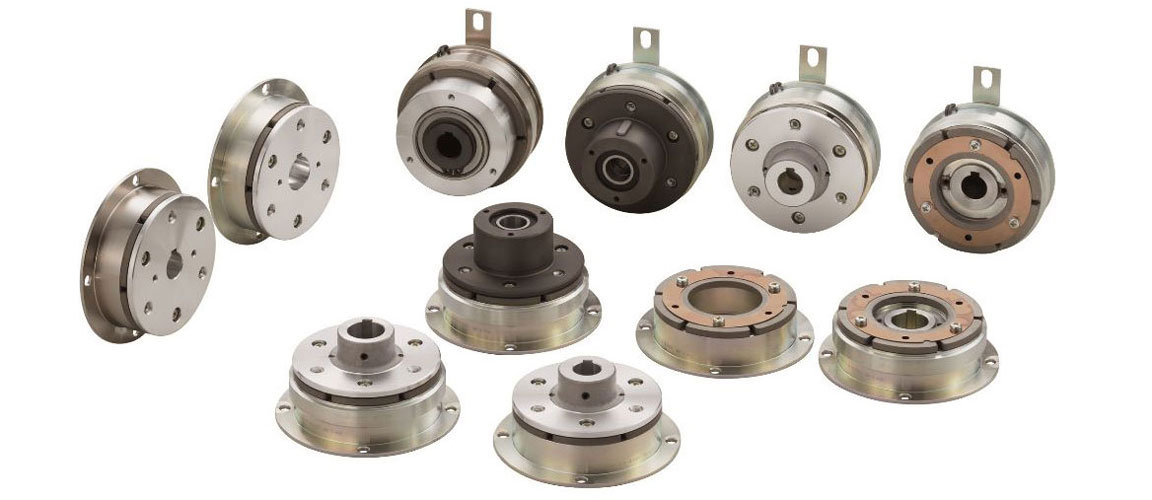How electromagnetic brakes and clutches work
The electromagnetic clutches and brakes from Miki Pulley are so-called Power-On products. Standard clutches and brakes, micro clutches and brakes and clutch and brake units are available.
By energizing the coil installed in the stator, an electromagnetic field is generated, which triggers a brake or clutch action.
With electromagnetic brakes, the magnetic field development pulls the armature disc onto the stator, which has an integrated friction lining. After bridging the air gap, the full braking torque is available within a few milliseconds. As soon as the brake no longer has any power supply, it releases, and the armature plate is detached from the stator again by the width of the air gap trough the attached plate spring.


Application example entrance and exit gate with a brake 111 combined with an ALS jaw coupling.
In special designs, an electromagnetic field of any strength can be generated by regulating the current, which directly influences the torque of the brake.
The switching principle for electromagnetic clutches is identical to the brakes, but the armature disk is not pulled onto the stator but onto the rotor. A rotation is transmitted through the connection of rotor and armature plate. This can take place at a standstill as well as during operation. In the de-energized state, the armature plate detaches itself from the rotor and the transmission of rotation is separated.
All designs have been developed on a basic stator model, which means that the clutches and brakes can be installed very easily in a wide variety of standard installation spaces.
Video: Operationg principle Electromagnetic brakes
Video: Operationg principle Electromagnetic clutches



